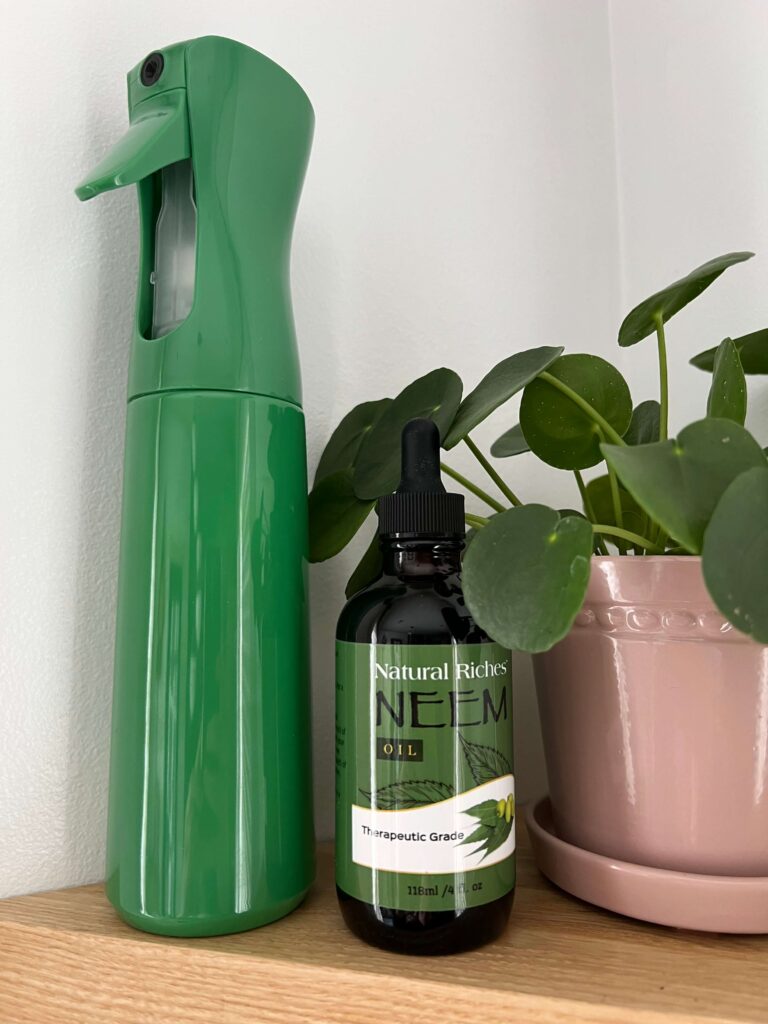
DIY Neem Oil Spray for Indoor Plants is The Secret to Healthy Indoor Plants
Do you dream of having lush ornamental plant that are, thriving indoor plants but find yourself constantly battling common pests and diseases? Watching the tiny invaders insect infestation like spider mites, aphids, or fungus gnats take over your beloved greenery can be disheartening. You might wonder if there’s natural pesticides to fight back and maintain all your hard work without resorting to harsh chemical insecticides that could harm your plants, your home environment, or even your pets.
The answer lies in neem oil—a centuries-old solution extracted from the seeds of the neem tree. This natural remedy is prized for its ability to repel pests, prevent fungal issues, and promote healthier plants, all without introducing harmful toxins into your living space.
Imagine being able to easily whip up a safe, effective organic pesticide neem oil spray at home. Not only will it protect your plants, but it will also save you money compared to store-bought solutions. Plus, knowing exactly what’s in your spray gives you peace of mind.
Whether you’re a plant newbie just starting your indoor jungle or a seasoned green thumb dealing with persistent pests, this guide will provide you with everything you need to create and use your own neem oil spray. Let’s dig into the benefits, safety tips, and step-by-step instructions to help your plants thrive!
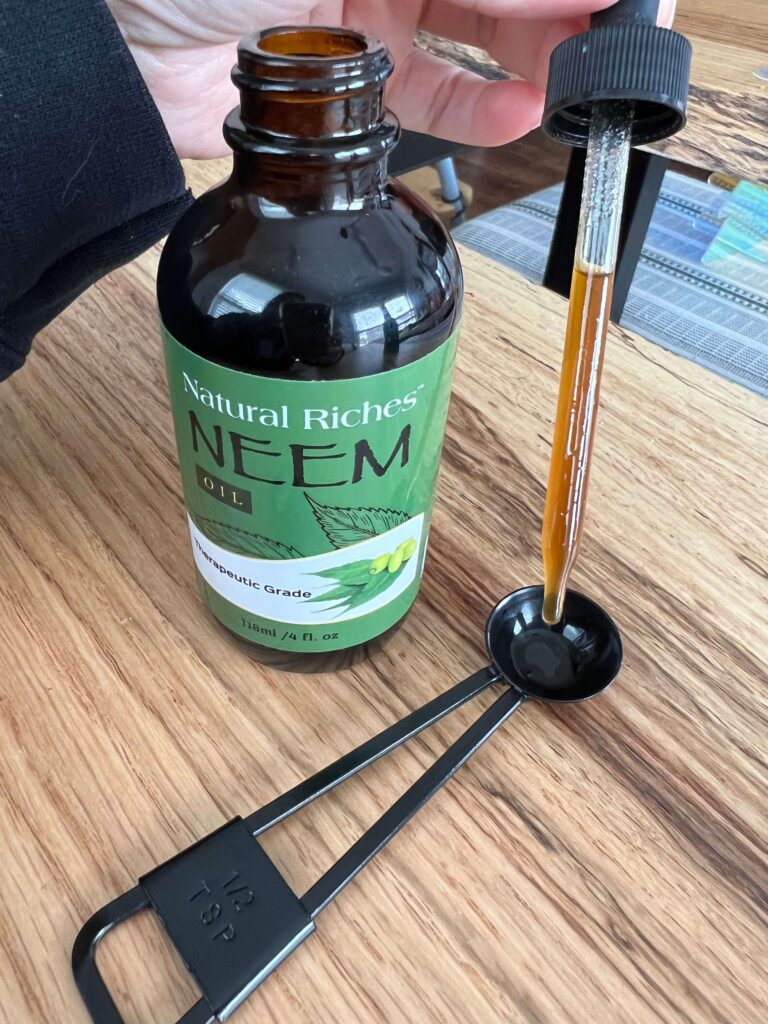
Why Use Neem Oil for Indoor Plants?
Neem oil is more than just a natural pest control option; it’s a holistic plant-care solution. Here’s why it’s become a staple for plant enthusiasts:
1. Pest Control Without the Toxins
Neem oil works by disrupting the life cycle of common plant pests indoor, such as spider mites, mealybugs, and fungus gnats. Its active ingredient, azadirachtin, interferes with pests’ ability to feed and reproduce. Unlike synthetic pesticides, neem oil is non-toxic to humans and pets, making it perfect for indoor use.
2. A Natural Fungicide
If your plants are showing signs of fungal infections like powdery mildew or leaf spot, neem oil can help. Its antifungal properties combat these issues without harming the plant.
3. Eco-Friendly and Sustainable
Neem oil is biodegradable and safe for beneficial insects when used correctly, making it an environmentally friendly choice. It’s a great option for plant lovers who care about sustainability.
Before we jump into the recipe, let’s explore a few key tips for using neem oil effectively.

How to Use Neem Oil Safely and Effectively
While neem oil is a fantastic tool for indoor plant care, using it the right way is crucial to avoid harming your plants or yourself.
1. Dilution is Key
Cold Pressed Neem oil is potent and needs to be diluted before plant surface application. Using it straight out of the bottle can burn your plants’ leaves. A proper neem oil solution mixture involves water, neem oil, and an emulsifying agent like liquid dish soap.
2. Choose the Right Time to Spray
Spray your neem oil mixture during the evening or early morning. Direct sunlight combined with oil can scorch your plants.
3. Test on a Leaf
Before spraying the entire plant, test the spray on a single leaf to ensure it won’t cause damage. Wait 24 hours before applying it to the entire plant.
4. Use in a Well-Ventilated Area
Neem oil has a strong smell, so it’s best to not prepare or spray in small area. A great way to prepare and apply the spray is in a large space with good airflow.
5. Use Gloves
Wear gloves to protect your hands from coming into direct contact with the neem oil.
Once you understand these basics, making and applying your DIY neem oil spray is a breeze!
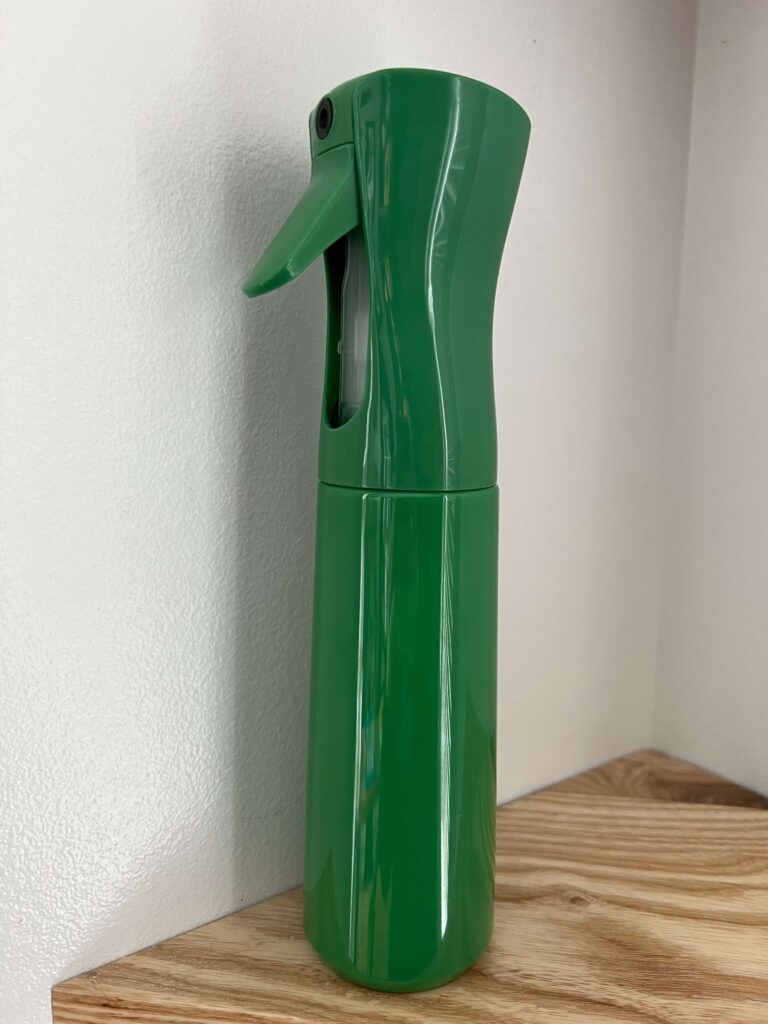

DIY Neem Oil Spray Recipe for Indoor Plants
Ready to craft your own neem oil spray? Here’s a simple, step-by-step recipe to get you started.
Ingredients:
- 1 teaspoon of cold-pressed pure neem oil
- 1 quart of warm water
- ⅛ teaspoon of liquid dish soap (to emulsify the oil)
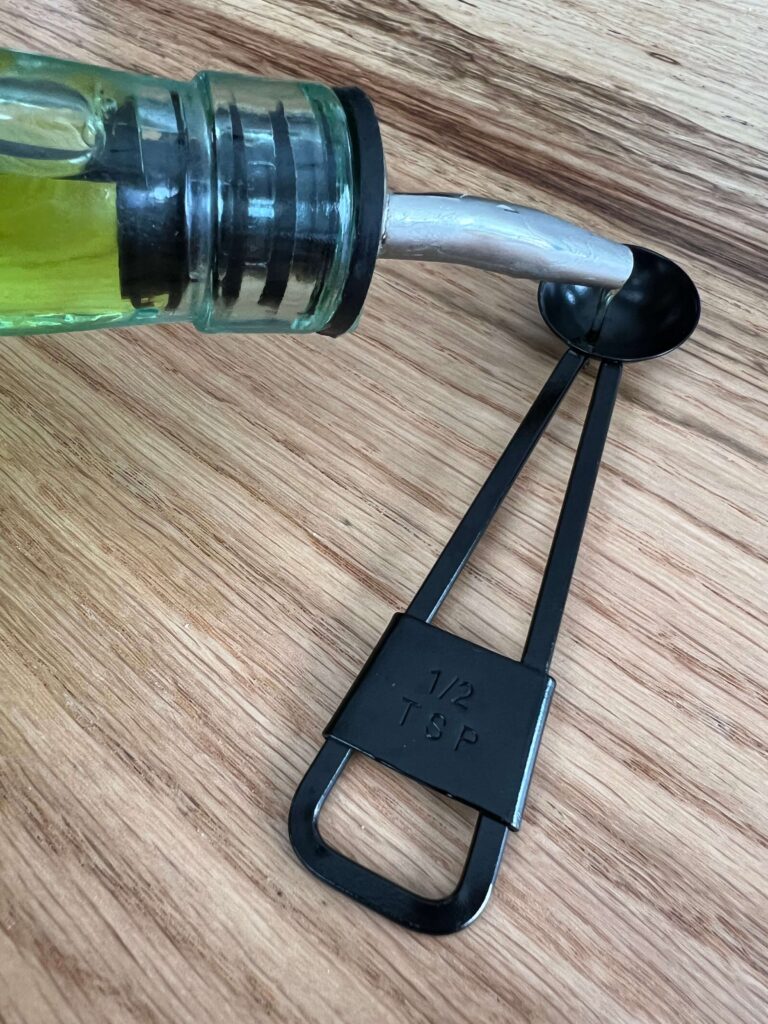

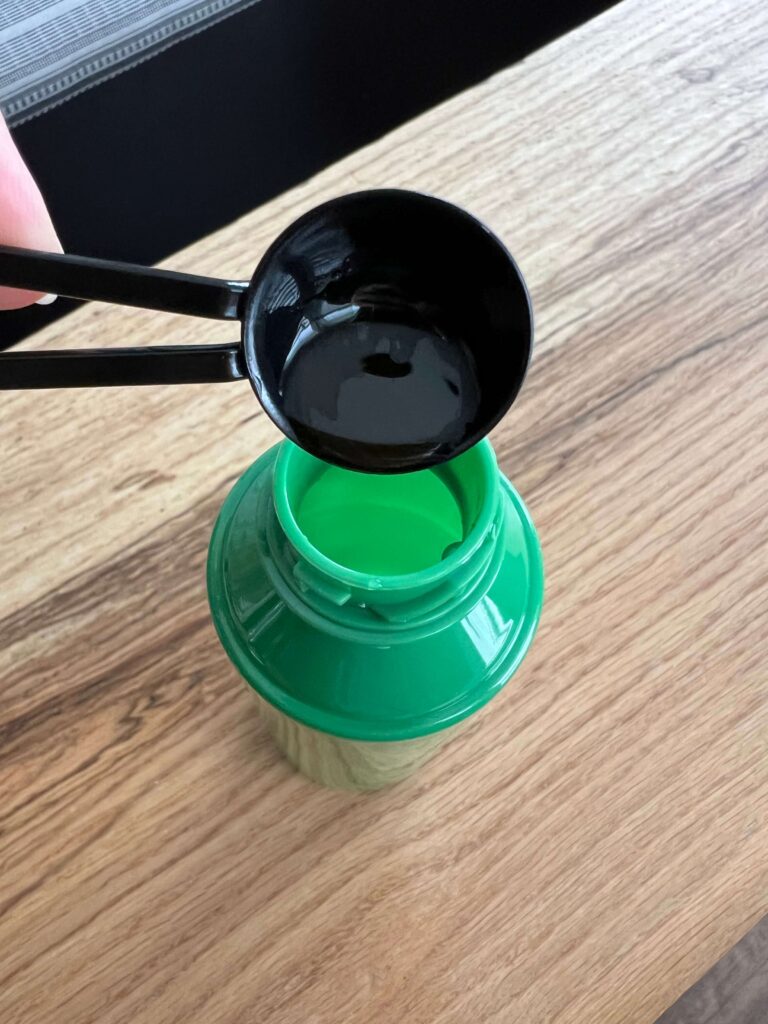
Instructions:
- Mix Soap and Water: In a bucket, mix warm water with 1/8 teaspoon of liquid dish soap. The soap helps the spray stick to plants.
- Add the Cold-Pressed Neem Oil: Slowly drizzle in 1 teaspoon of neem oil while stirring to create a 0.5% neem solution, ideal for preventative measure spraying. For a stronger solution, use up to 4 teaspoons of neem oil.
- Pour into a Spray Bottle: Use a funnel to transfer the mixture into a spray bottle.
- Shake: Shake the bottle well to ensure the neem oil is fully emulsified.
- Spray: Spray the solution on all surfaces of the plant, including the undersides of the leaves where pests often hide.
- Reapply as needed: More detailed information on the re-application process and need listed below.
- Store at Room Temp: Store under your sink or in a closed cabinet when not using.
Reapplication Tips:
- Reapply the neem oil spray every 7–14 days to keep pests and diseases at bay inside your home.
- For persistent infestations, use it weekly until the issue resolves itself.
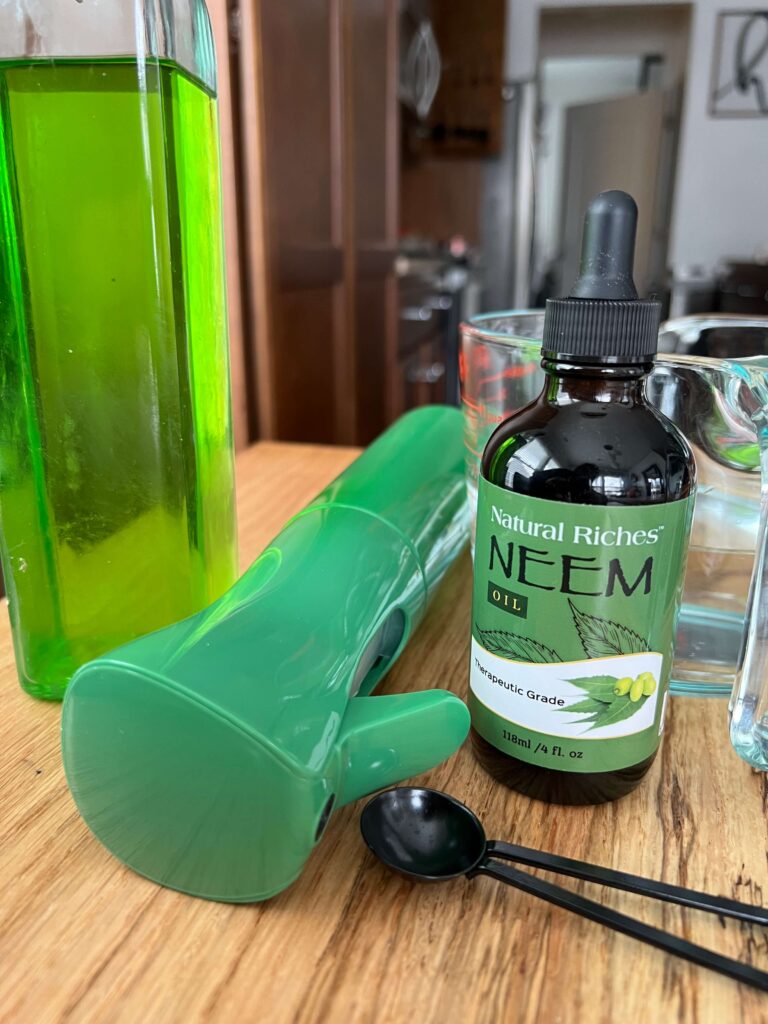
Common Mistakes to Avoid When Using Neem Oil Spray
While neem oil spray is an excellent natural solution for pest control and plant health, using it incorrectly can lead to unintended consequences. Avoiding these common mistakes will ensure your plants benefit fully from this powerful remedy:
1. Over-Concentrating the Solution
Using too much neem oil in your mixture can harm your plants instead of helping them. High concentrations may cause leaf burn, leaving unsightly damage on your greenery. Stick to the recommended ratio of 1 teaspoon of neem oil per quart of water for routine use, or up to 4 teaspoons for severe infestations. Always err on the side of caution, especially for delicate plants.
2. Spraying at the Wrong Time of Day
Timing is everything when using neem oil spray. Applying it during the heat of the day, when the sun is strongest, can cause the spray to act like a magnifying glass, intensifying sunlight and scorching the leaves. Instead, apply neem oil in the early morning or late evening, when temperatures are cooler, and the sun is less direct.
3. Skipping a Patch Test
Every plant is different, and some may react sensitively to neem oil. Before treating your entire plant, always test the spray on a small, inconspicuous area. Monitor the test leaf for 24-48 hours to ensure no adverse reactions, such as discoloration or wilting. This simple step can save you from damaging your entire plant.

4. Forgetting to Shake the Spray Bottle
Neem oil doesn’t naturally mix well with water, even when combined with soap as an emulsifier. If you don’t shake the spray bottle before each use, the neem oil may separate and lead to uneven application. Always shake thoroughly to ensure the mixture is consistent and effective.
5. Applying Too Frequently or Overusing
While neem oil is natural and safe, overusing it can disrupt the ecosystem around your plants. For example, beneficial insects like ladybugs and predatory mites may be affected if the spray is applied too often. Indoors, overuse may also cause a sticky residue to build up on leaves. A good rule of thumb is to reapply every 7–14 days, or after rain or heavy watering, for ongoing pest prevention.
6. Ignoring Proper Ventilation
Neem oil has a strong scent that some people find unpleasant. When spraying indoors, ensure you’re in a well-ventilated area to avoid discomfort. Consider setting up a small fan to help circulate air, especially if you’re working in a closed space like a bathroom or bedroom.
7. Neglecting Personal Protection
Neem oil is safe for humans but can be messy. Always wear gloves when mixing or applying the spray to avoid prolonged contact with your skin. For larger plants or extensive applications, consider wearing a protective mask if you’re sensitive to strong odors.
By keeping these common mistakes in mind, you can maximize the benefits of neem oil while protecting your plants and ensuring a smooth, stress-free application process. Avoiding these pitfalls will not only save time and resources but also leave your indoor garden thriving and pest-free.
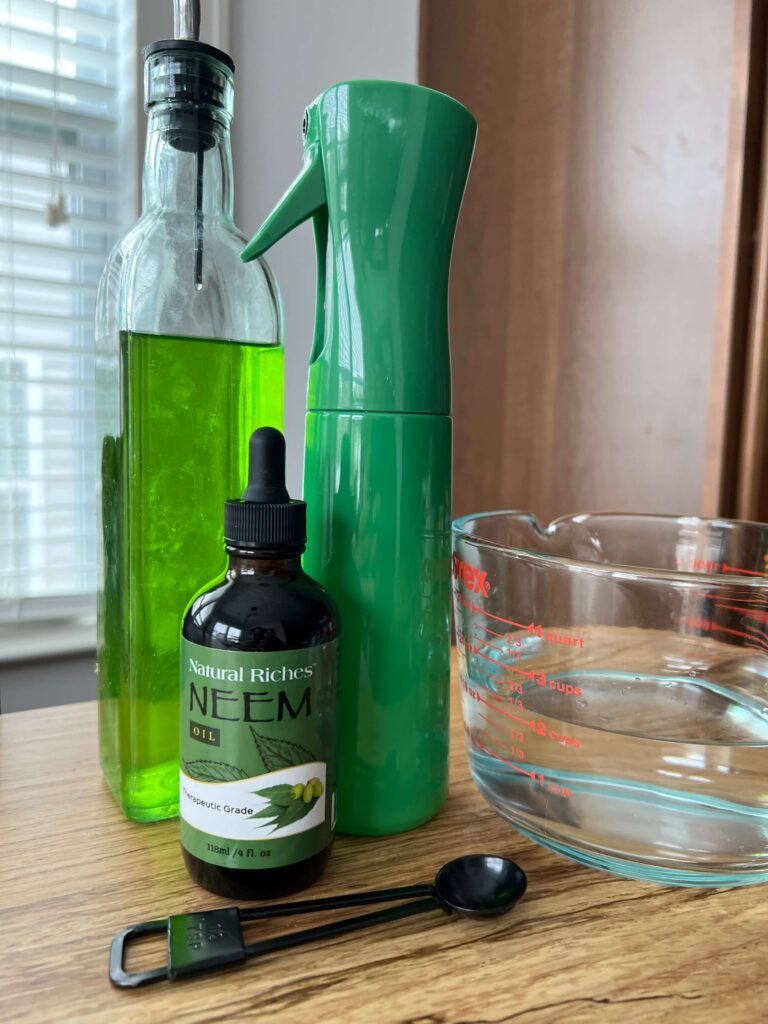
Keep Your Plants Thriving with Neem Oil
Neem oil is more than just a natural pest control option—it’s a way to show your plants the care and attention they deserve. By making your own DIY neem oil spray, you’re choosing a safer, more eco-friendly approach to plant care that benefits both your indoor greenery and the environment around you without using chemical pesticides.
As we’ve covered, neem oil not only helps combat common indoor pests like spider mites and fungus gnats but also prevents fungal diseases. It ensures your plants stay vibrant and healthy with this natural product. And with this simple, cost-effective recipe, you have a tool that’s just as easy to make as it is to use.
Now that you’re equipped with the knowledge and know-how, it’s time to take action. Mix up your batch of DIY neem oil spray for indoor plants and start treating your plants today. You’ll love seeing them bounce back from pest infestations and thrive like never before.
For more gardening hacks and DIY plant care tips, explore Orchid Care 101 Blog Post. Your DIY plant care journey doesn’t stop here—keep learning, experimenting, and growing alongside your greenery.
Your healthy, garden pests free plants will thank you—and so will your future self!

If or when you do make your own DIY Neem Oil Spray for Indoor Plants. I’d love for you to follow us and tag us on Instagram so I can see your really DIY projects finished results! Happy crafting!
COZY HOME, COZY RECIPES:
Every cozy home deserves amazing recipes, and it’s even better when those recipes are both delicious and healthy. Our goal is to provide tasty meals that are easy to make, regardless of your skill level.
Fast, easy meals leave more time for fun activities, making your home a hub of joy and good food.
CONNECT WITH US:
As always, we love hearing about your experiences with our “DIY Neem Oil Spray for Indoor Plants: A Natural Pesticide”. Reach out to us through our social channels. Any questions you have, we’re here to answer.
Stay updated by joining our newsletter, offering a monthly dose of new recipes and a first look at upcoming projects.
MORE COZY KITCHEN RECIPES:
If you’re hungry for more, explore our collection of Cozy Kitchen Recipes. Another healthy favorite is the “Sausage Potato Veggie Bake.” Find these recipes and more here.
DIY RESOURCES:
For additional resources, check out our DIY Tutorials, offering a wealth of information to enhance your home improvement skills.

